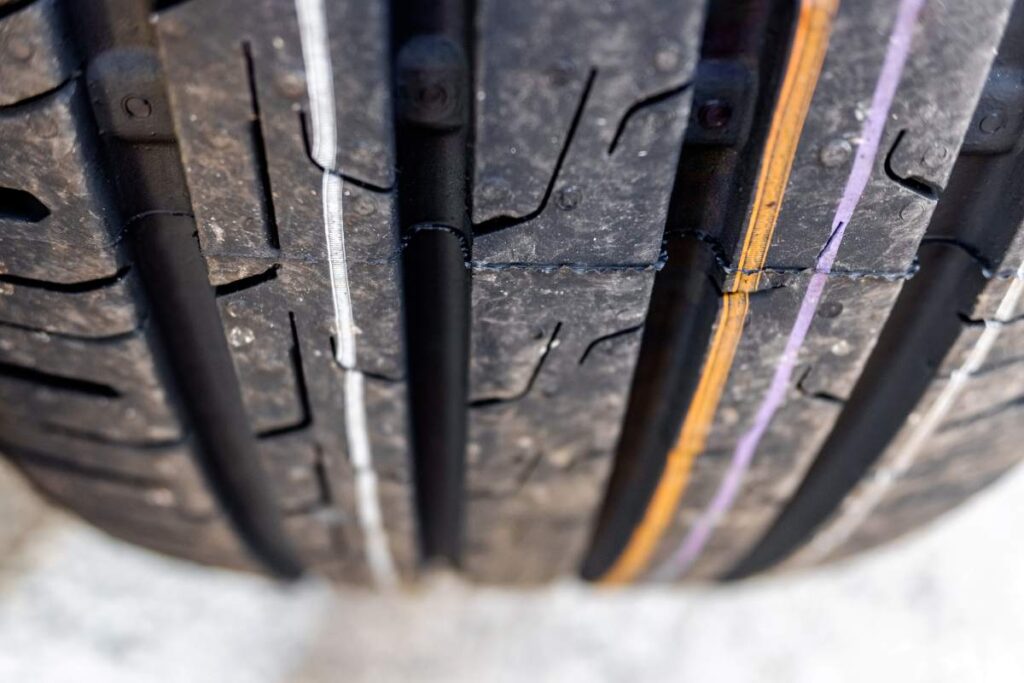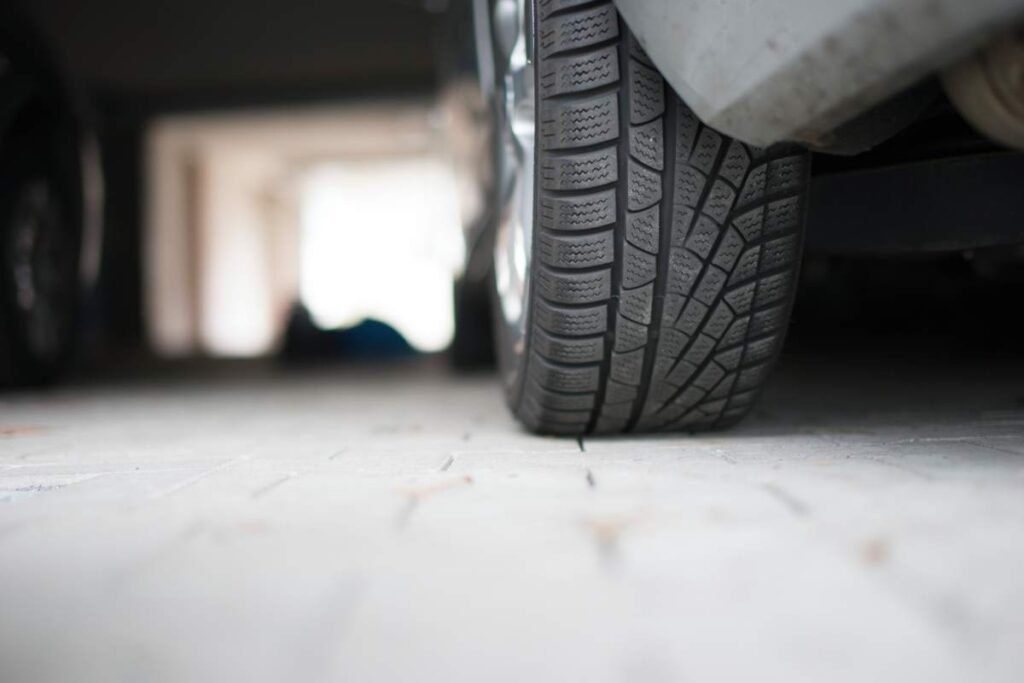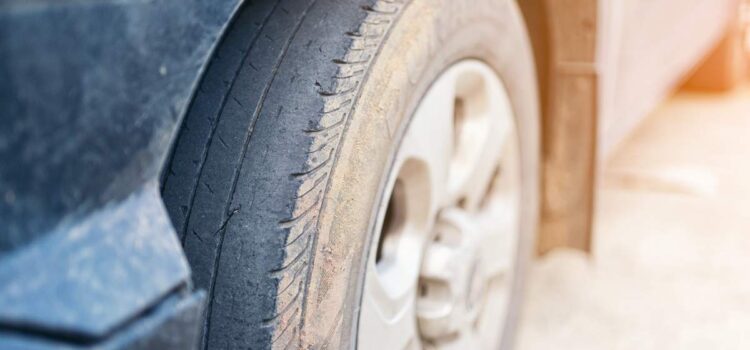Tyres are critical to your vehicle’s safety, performance, and fuel efficiency. However, many drivers overlook the importance of regularly checking their tyres for wear and tear. Worn-out tyres can be hazardous, increasing the risk of accidents, especially in challenging driving conditions.
To keep your vehicle in top shape, it’s crucial to understand the signs of tyre wear, how to inspect them, and when it’s time to replace them. This article covers everything you need to know about tyre health and when to change them.
Signs Your Tyres Have Gone Bad
Tread Wear
The tread on your tyres provides traction, which is essential for safe driving, especially in wet or slippery conditions. One of the easiest ways to determine if your tyres have gone bad is to check the tread depth. As tyres wear down, the tread becomes shallower, reducing the tyre’s ability to grip the road. In many countries, the legal minimum tread depth is 1.6 millimetres. If your tyre’s tread is at or below this depth, it’s time to replace the tyre.
An easy way to check the tread depth is by using a tread depth gauge or the “coin test.” Insert a coin into the grooves of your tyre’s tread. If the top of the coin is visible, it indicates that your tyre tread is too worn and should be replaced. Keep in mind that different driving conditions, such as rainy or snowy roads, may require deeper tread depth for optimal safety.
Cracks and Bulges
Over time, tyres may develop cracks or bulges on their surface due to exposure to extreme temperatures, sunlight, or road hazards like potholes. Cracks are often seen on the sidewalls of the tyre and indicate the rubber is degrading. Bulges, on the other hand, form when the internal structure of the tyre has been compromised, often due to hitting curbs or potholes.
If you notice cracks or bulges in your tyres, it’s a clear sign they are no longer safe for driving. A tyre with bulges is especially dangerous, as it could lead to a blowout while driving, putting you at serious risk.

Vibration While Driving
While some vibrations while driving are normal, especially on rough roads, excessive or unusual vibrations could be a sign of tyre issues. Misaligned wheels, unbalanced tyres, or damaged tyres can all cause vibrations. If your car vibrates even on smooth roads, it could indicate that the tyre’s internal structure has weakened or that the tread is unevenly worn.
Persistent vibrations should not be ignored. It’s recommended to have a mechanic inspect your tyres and wheel alignment to identify the cause of the vibration.
Uneven Tread Wear
Your tyres should wear evenly across their surface. If you notice that one part of the tyre, such as the inner or outer edge, is more worn than the rest, this could indicate an issue with wheel alignment or suspension. Uneven tread wear also means that your tyres will not last as long and will need to be replaced sooner.
Regularly rotating your tyres, typically every 10,000 to 12,000 kilometres, helps ensure even wear and prolongs their lifespan.
Reduced Performance in Wet Conditions
One of the clearest signs that your tyres have worn out is a decrease in performance in wet conditions. If you notice that your car is skidding or aquaplaning more frequently on wet roads, it could mean that your tyre’s tread is not providing adequate grip.
This lack of traction is a serious safety concern, as it increases the likelihood of losing control of your vehicle, especially in heavy rain. If your tyres are slipping or struggling to maintain traction in wet conditions, it’s time for a replacement.
Age of the Tyres
Even if your tyres look fine, age is an important factor to consider. Over time, the rubber in tyres degrades, even if the tread remains within legal limits. Most tyre manufacturers recommend replacing tyres every six to ten years, regardless of wear, due to the gradual breakdown of materials.
To check the age of your tyres, look for the DOT (Department of Transportation) code or EU tyre label on the tyre’s sidewall. The last four digits of this code represent the week and year the tyre was manufactured. For example, a code that reads “2418” indicates the tyre was made in the 24th week of 2018. If your tyres are more than six years old, consider replacing them for safety reasons.

When to Change Your Tyres
Tread Depth Below 1.6 Millimeters
As mentioned earlier, when your tread depth reaches 1.6 millimetres or less, your tyres are no longer safe to drive on. Regularly checking your tread depth, especially before long trips or during winter months, ensures you don’t get caught off guard by unsafe tyres.
Keep in mind that the 1.6-millimetre threshold is a minimum legal requirement. If you drive in wet or icy conditions, it’s advisable to replace tyres before they reach this point, as deeper tread is essential for better road grip in poor weather.
After 5-10 Years of Use
Tyres naturally degrade over time due to exposure to UV rays, chemicals, and road conditions. Even if the tread is still within safe limits, most tyres need to be replaced after five to ten years. A good rule of thumb is to have your tyres inspected annually by a professional after five years of use to ensure they are still safe.
Damage from Road Hazards
If your tyres have suffered damage from hitting a pothole, curb, or other road hazards, they may need to be replaced. Cuts, punctures, or bulges in the tyre can make it unsafe to drive. Some minor punctures can be repaired, but if the damage is severe or on the sidewall, replacement is often the only safe option.
Vibrations or Uneven Wear
If you notice excessive vibrations while driving, uneven tread wear, or unusual handling, it’s time to have your tyres inspected. These signs often indicate underlying issues with the tyres or vehicle alignment that need to be addressed promptly to avoid accidents or further damage.
Reduced Fuel Efficiency
Worn-out tyres can also affect your vehicle’s fuel efficiency. If you notice a drop in fuel economy, it could be due to increased rolling resistance from worn tyres. Replacing them can improve your car’s performance and help you save on fuel costs in the long run.
Conclusion
Your tyres are the only part of your vehicle in direct contact with the road, making their condition critical for your safety and driving performance. Regularly inspecting your tyres for signs of wear, damage, or ageing is essential for preventing accidents and ensuring optimal vehicle performance.
If you notice any of the warning signs mentioned—low tread depth, cracks, bulges, uneven wear, or reduced wet performance—it’s time to replace your tyres. By being proactive about tyre maintenance and knowing when to change them, you can stay safe on the road and extend the lifespan of your vehicle.






